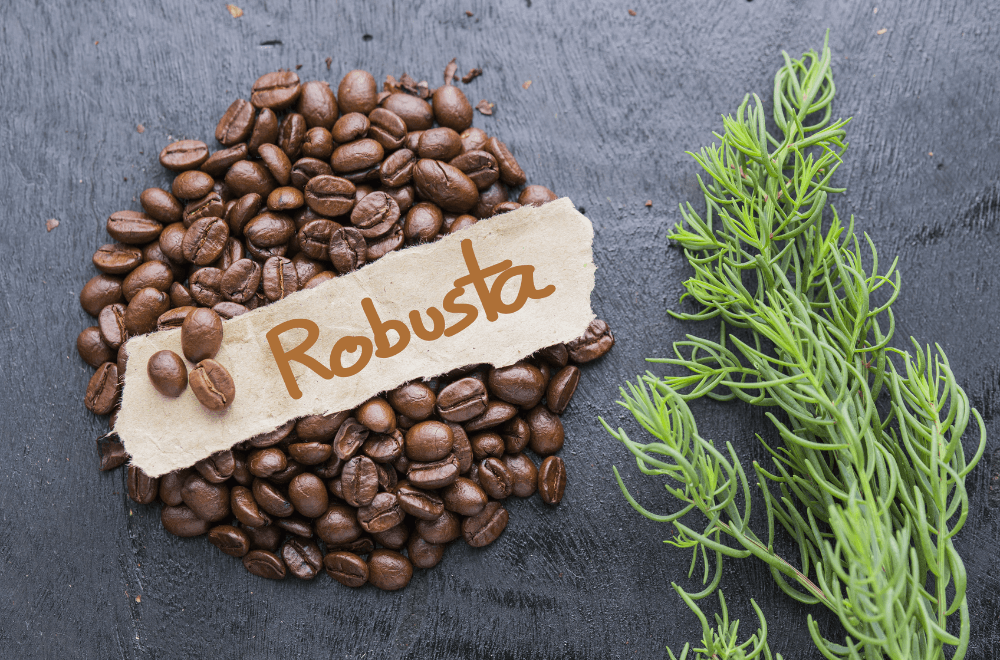A change in elevation has a greater impact on your cup of Joe than you think, so what is high-altitude coffee, and why does it matter so much? Let’s dig in.

I absolutely detested riding rollercoasters back when I was a kid. I never really understood the appeal until I rode one again during high school. It’s a thrilling experience you find yourself craving.
That is the same feeling I get whenever I have a chance to drink an SHB (Strictly Hard Bean) java. So, what is high-altitude coffee? As it turns out, coffee beans grown in high altitudes yield a great, if not the greatest, quality of flavor.
How Does A High Altitude Affect The Flavor?
The higher you go, the cooler it gets. Colder temperatures allow the coffee beans to develop gradually. Consequently, the bean can produce and lock in more sugars, and these will generate the complex flavor profiles of your cup of Joe. This also explains why the beans are denser.
There are drawbacks, especially for farmers. Since the terrains can be dangerous, the logistics of transporting the coffee beans down can be a challenge, not to mention that the crop has to be monitored lest they end up with a low-yielding crop.
Higher Altitude Means More Flavor
Very Low Altitude
These are places that are 2,000 ft. or lower above sea level. This is where Robusta coffee beans flourish as they have become more resistant to pests and disease. They adapted to higher temperatures and challenging weather conditions.

Coffee beans grown in these areas taste sharper and stronger, with an apparent bitter taste. In addition, it has an interesting grainy overtone and nutty aftertaste. On the bright side, it does contain more caffeine and releases a considerable amount of crema in espresso. You might also be interested in our Robusta vs. Arabica guide.
Low Altitude
These areas are 2,500 ft. above sea level, the most prominent in Hawaii, which produces Kona coffee. Despite the low altitude, their volcanic soils are rich in minerals, making them conducive for growing quality coffee.
Flavor-wise, the coffee will start to get that mild and subtle sweetness with hints of citrus fruits and spicy and nutty tones. These delicate flavors will dissipate as the roast gets darker, so get the light-roasted ones to appreciate its flavor profile fully.
Medium Altitude
The flavor will become more rounded once it reaches medium altitude or 3,000 ft. above sea level. These coffee beans prosper in Central Latin American countries, with the most noteworthy ones in Brazil and some parts of Nicaragua and Costa Rica.
These kinds of coffee beans are known for their smoothness and mild acidity. The nutty undertones become more noticeable. It is complemented by its sweet notes of caramel and dark chocolate, which gives a pleasantly bitter and smoky aftertaste.
Some of these beans are processed naturally (dry-processed), and these tend to be sweeter and have a subtle fruity note if roasted and brewed right. Since these coffee beans are low density and fall under the Good Hard Bean (GHB) grading, I recommend finding a light to medium roast as it allows the flavors to pop out.
High Altitude
High-altitude coffee beans are grown at 4,000 ft. above sea level and thrive in countries such as Indonesia, Mexico, Costa Rica, and Nicaragua. These coffee beans boast a full-bodied taste, with the flavor profiles more pronounced and complex. For instance, coffee from the Indonesian islands of Java and Sumatra has a thick, buttery texture with earthy and chocolate notes and a subtle pinch of spiciness.

However, the Mexican Altura features a more citrus fruit flavor that blends well with its natural vanilla-like sweetness and hazelnut undertones. Regardless, most high-altitude coffee beans share common hints of earthy cocoa and nuts.
As they are now considered hard beans, they are denser and can be challenging to roast. In addition, the roasting process plays a role in determining which flavor profile is highlighted. Generally, hard beans and strictly hard beans (the very high-altitude ones) are roasted medium to dark since they can withstand high temperatures without the flavor being affected as much.
Very High Altitude
The peak of coffee bean quality and flavor complexity grows atop lands 5,000 ft. above sea level. These are the strictly hard beans from the elevated farms of Colombia, Ethiopia, Honduras, Guatemala, and Papua New Guinea, to name a few.
These coffee beans are known for their fruity flavor, ranging from citrus, berries, stone, and pome fruits. This is accentuated with a gentle floral and spicy tone and wine-like notes, though it is noteworthy that Guatemalan coffee’s dark chocolate notes and nutty hints are more noticeable. Nonetheless, these very high-altitude coffee beans boast tremendous flavor profiles but high acidity levels.
A Helping Hand For Laborers
A number of farmers have now improved their quality of life because of high-altitude coffee. According to the Vanderbilt Institute for Coffee Studies, Mayan and Guatemalan coffee growers are getting out of poverty due to the high demand and the laborers’ aptitude to accomplish such a difficult task.
It also helps that more coffee companies are Fair Trade certified, ensuring fair pay and just working conditions are met. Not only are the coffee beans ethically produced, but it helps the environment as well! You can learn more by reading about our best organic coffee brands!

